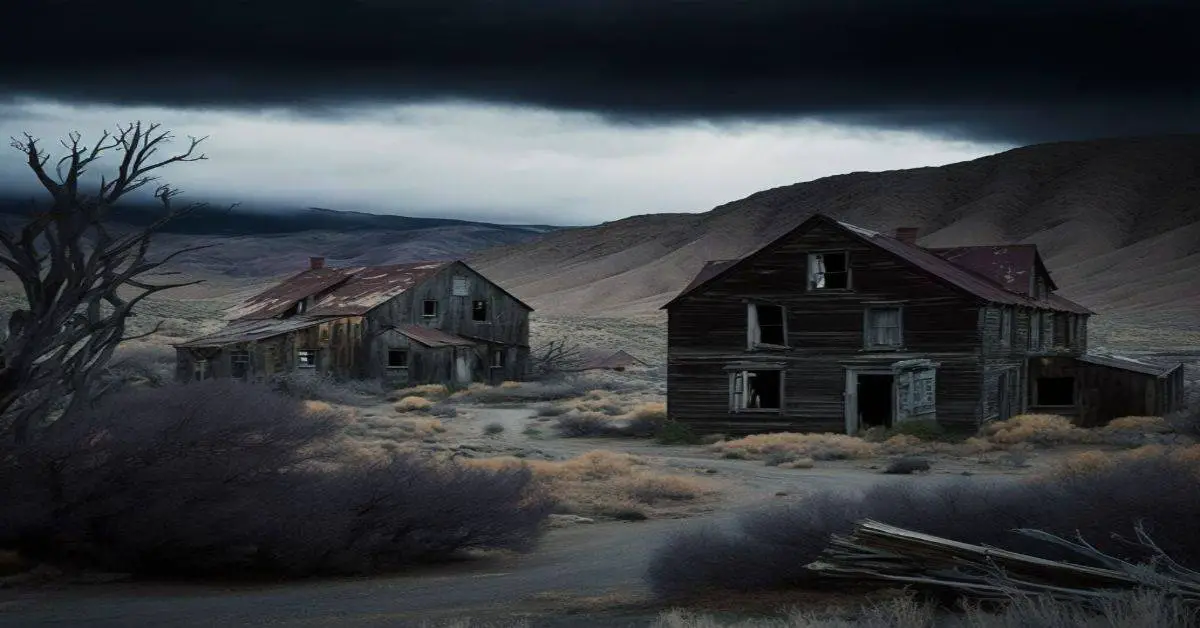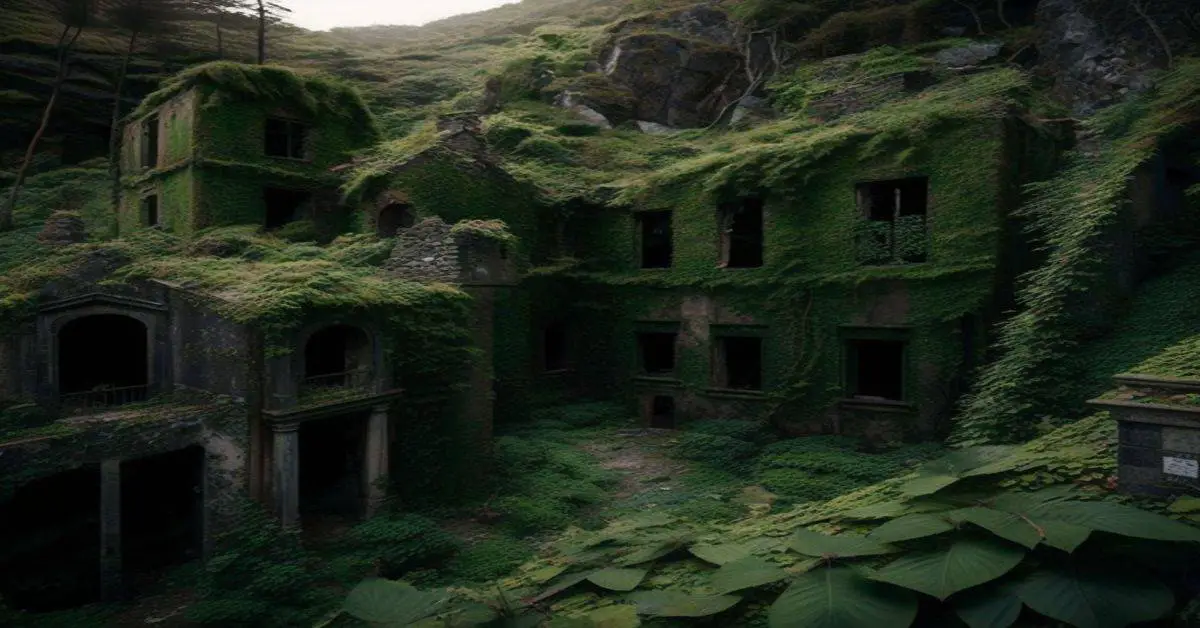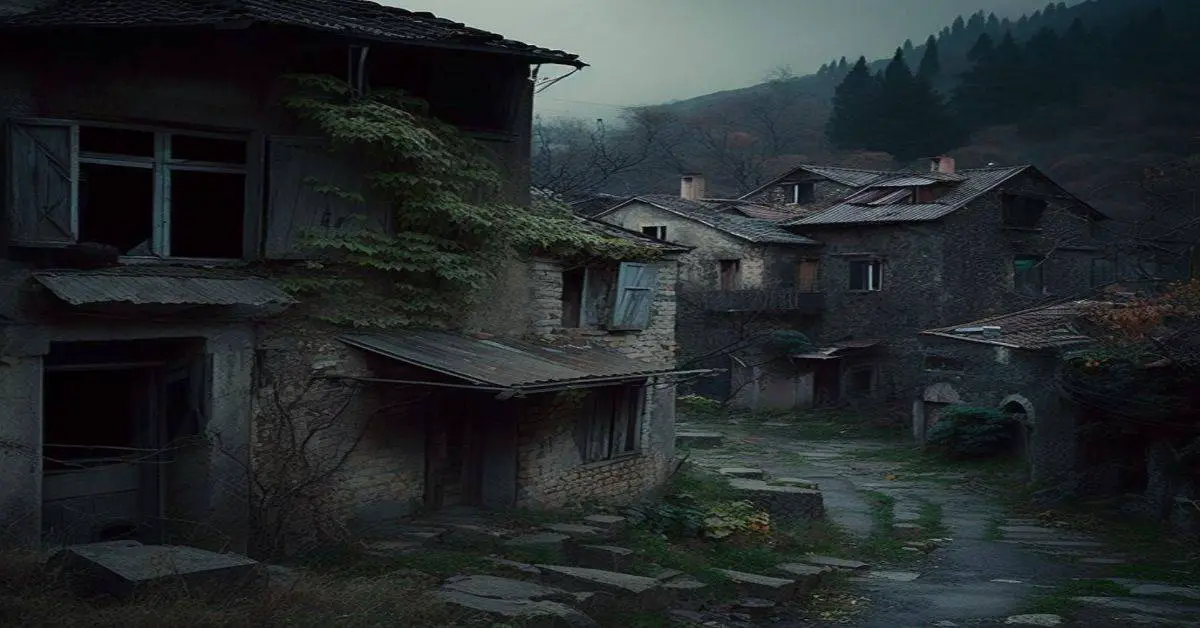The abandoned town of Tacoma, also known as Tecoma, deep within the heart of Nevada, once stood as a bustling mining hub and major railhead for the surrounding area. Established by the Central Pacific Railroad in 1869, the town boasted a post office, hotel, restaurant, café, and two saloons, with a population of 60 people.
Despite its early success, the town’s fortunes declined rapidly in the 1920s, and most residents had left by 1930.
Today, visitors can explore the remains of Tacoma, with numerous concrete foundations and the old train depot still visible. However, due to broken bottles and glass chips, caution should be taken when visiting the area.
Despite its disrepair, the abandoned town of Tacoma stands as a haunting reminder of the town’s once-thriving past and the individuals who shaped its history. In this article, we will delve into the history and economic significance of Tacoma, as well as provide insights into visiting this fascinating ghost town.
Key Takeaways
- Tacoma was an abandoned town established by Central Pacific Railroad in 1869 in Nevada, which had a peak population of 60 people and had a post office, hotel, restaurant, café, and two saloons.
- It was a major railhead for surrounding mining activity and produced over $40,000 worth of copper in 5 years; however, it faced a rapid decline in the early 20th century, with the hotel burning down in 1918 and not being rebuilt.
- Visitors can explore the remains of Tacoma, Nevada, including concrete foundations and an old train depot, but should exercise caution due to broken glass and debris.
- Exploring the ruins of abandoned settlements has become a popular activity for history enthusiasts, and visiting Tacoma provides an opportunity to appreciate its historical significance on foot, while taking proper precautions to avoid injury.
History and Origin
The history and origin of Tacoma (Tecoma), a Nevada ghost town, can be traced back to its establishment by the Central Pacific Railroad in 1869. The town quickly became an important railroad stop and the major railhead for the area’s mining activity.
In just five years, Tacoma produced over $40,000 of copper, making it an important contributor to the local economy. However, the town’s fortunes declined rapidly in the early 20th century. The population of the town dwindled, and the stores and businesses began to close.
The hotel burned down in 1918 and was not rebuilt, which likely contributed to the town’s decline. By 1930, most of the town’s residents had left, and the remaining buildings were either moved or dismantled. Today, the town stands as a testament to the railroad impact on the area and the subsequent decline of the mining industry.
Economic Significance
Economically significant, Tacoma played a vital role in the mining industry of the surrounding area. As the primary railhead for mining activities, the town produced more than $40,000 worth of copper in just five years. This significant monetary contribution to the economy was essential to the town’s growth and development during the late 19th century.
However, Tacoma’s economic significance was short-lived, and the town experienced a rapid decline in the early 20th century. The town’s downfall can be attributed to the exhaustion of nearby mining resources, leading to the migration of residents and the closure of businesses.
The decline in economic activity eventually led to the town’s abandonment, with most of its buildings dismantled or moved. Today, the remnants of Tacoma serve as a reminder of the once-thriving mining town and its economic significance to the region.
Visiting Tacoma Today
Currently, curious visitors can explore the concrete foundations and remnants of the once-thriving mining hub, taking a trip back in time to witness Tacoma’s tangible traces. Exploring ruins of abandoned settlements has become popular for history enthusiasts, and Tacoma is no exception. The town’s remnants offer an opportunity to witness the traces of a once-bustling community and to imagine what life must have been like for its residents.
Despite its abandoned state, Tacoma still holds hidden treasures for those who visit. The concrete foundations and remnants of the town’s buildings offer a glimpse into the past, and visitors can explore the area on foot to appreciate the site’s historical significance fully. However, visitors should be careful while exploring, as the area is littered with broken glass and debris, and proper precautions should be taken to avoid injury.
Frequently Asked Questions
What led to the decline of Tacoma, Nevada Ghost Town in the 1920s?
The decline of Tacoma’s ghost town in the 1920s was attributed to various decline factors, including the exhaustion of copper deposits, the economic impact of the Great Depression, and the rise of other mining towns. These factors led to the closure of most stores and the departure of most residents.
Are there any rumors or legends associated with the ghost town?
There are no significant ghost town legends or supernatural stories associated with Tacoma. Its decline was due to the exhaustion of copper mines, which led to the closure of businesses and the departure of residents.
Have any movies or TV shows been filmed on location in Tacoma, Nevada, Ghost Town?
The abandoned Tacoma ghost town has not been a popular filming destination, with no notable movies or TV shows shot on location. Also, there are no records of famous visitors to the town.
What is the closest town to Tacoma, Nevada Ghost Town, and how far away is it?
The closest town to Tacoma Ghost Town is Elko, approximately 40 miles away. There are no nearby attractions to the ghost town; it is only accessible via a dirt road. Guided tours are not available.
Are there any notable individuals or events associated with the history of Tacoma Ghost Town?
Tacoma Ghost Town was a significant railhead for mining activities, producing over $40,000 of copper in five years. However, there are no notable individuals or significant events associated with the town’s history.


